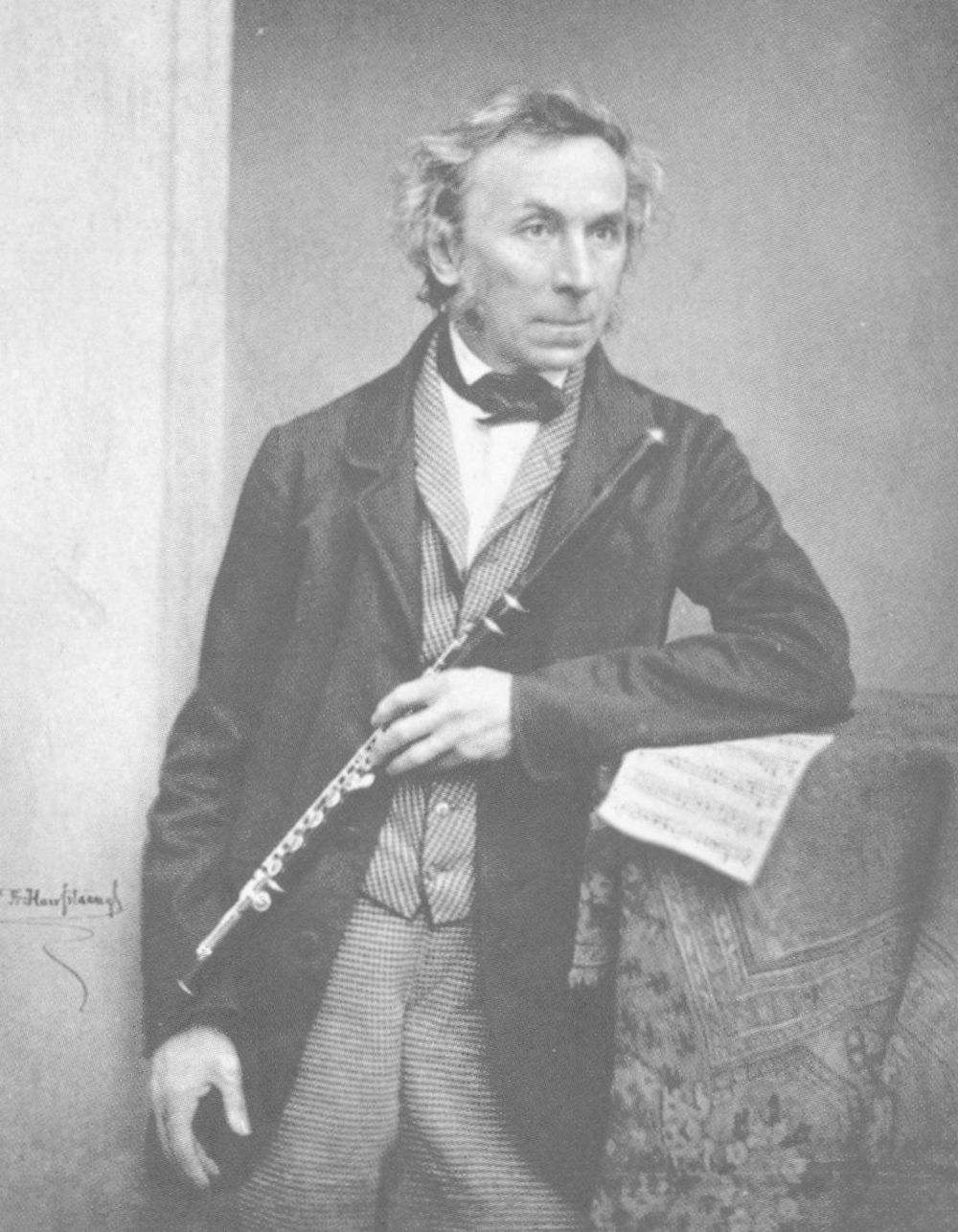3. The Boehm Flute
The true breakthrough in flute-making didn't happen until after the Classical period, thanks to Theobald Böhm (1794-1881). This flutist and instrument maker gave the flute its present-day form (back to cylindrical). In 1832, Theobald Böhm developed a chromatic key system, considering the placement of the tone holes based solely on acoustic principles. Historians agree that this system also served as a model for the clarinet and the modern, overstrung piano. However, Theobald Böhm wasn't the first or the last to design a new flute. But within the last 160 years, his development has remained almost unchanged, with little recent interest or attempts to modify it. For instance, Louis Dorus (around 1860), Rudall Carte Co. (around 1860), Otto Schwedler (around 1890), and Alexander Murray (around 1960) attempted to enhance Böhm's design, aiming for a flute with greater technical capabilities, a wider dynamic range, and tonal spectrum. Yet, ultimately, Böhm's construction, both complex and elegant, while still intuitive and straightforward to play, remained unchanged as the blueprint for modern flute construction.

Theobald Böhm (1794-1881)
Before Böhm's innovation, players struggled with the uncomfortable spacing between tone holes. They also dealt with a series of 'cross-fingerings' to reach the notes of the third octave. The small bore (inner diameter) and tiny tone holes of the Baroque and Classical flutes limited the instrument's available volume.
Theobald Böhm was also responsible for enabling flutes to be constructed using metal. Wooden flutes were still widespread until the early 20th century, but his key system brought numerous improvements. The bore and diameter of the tone holes were no longer restricted by the size of the musician's hands and fingers. All keys could be reached within an average player's range, the sound quality improved, and the flute could now assert itself within the orchestra.



